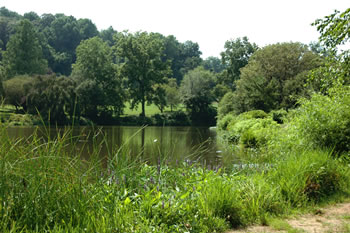The Cusp of a Wildlife Protection Renaissance

By Eric Stiles and Collin O’Mara
The historic, bipartisan Recovering America’s Wildlife Act (RAWA), recently introduced in the US Senate which aims to invest a total of $1.4 billion annually for state-led efforts to protect thousands of at-risk wildlife species, will be the most significant investment in wildlife conservation in a generation. An investment of this magnitude will support at-risk species population numbers to prevent them from having to receive federal protection under the Endangered Species Act, as well as provide funding to recover species already federally protected. RAWA’s benefits will extend to economic stimulation with job creation and support for the outdoor recreation economy.
A loss of species and biodiversity is a here and now problem, only exacerbated by climate change. A shocking one-third of America’s wildlife species are at an increased rate of extinction and sadly, more than 150 U.S. species have already gone extinct. The recently released Intergovernmental Panel of Climate Change (IPCC) report must serve as our final wake-up call to propel us toward aggressive strategies tailored to the species, habitat, and unique human-wildlife connections. RAWA will serve as one resiliency strategy by providing science-based planning and implementation support. Historically, funding for wildlife recovery and protection was lacking, but greatly needed. RAWA will provide unprecedented support through directly funding wildlife recovery and conservation to effectively protect the most vulnerable of species throughout the country.
Specifically, federal funding from RAWA will flow directly to state-led efforts to recover wildlife outlined in each state’s Wildlife Action Plan. These plans are a Congressional prerequisite to receive wildlife-supporting grants. Serving as a blueprint for conservation of species, New Jersey’s Wildlife Action Plan is tailored to the Garden State’s specific wildlife conservation needs and habitat protection. With funding to implement the Plan, we have a chance to prevent species from becoming threatened or endangered and support the recovery of species that are already considered at-risk. In New Jersey, species such as the red knot, little brown bat, common tern, corn snake, northern red salamander, and banded sunfish, are just a few of numerous species in need of assistance.
New Jersey’s diverse habitats such as forests, grasslands, and wetlands, are home to diverse species of birds, mammals, reptiles, fishes, amphibians, and invertebrates. Habitat loss, invasive species, and climate change are just a few threats to the existence of not only New Jersey’s wildlife, but wildlife throughout the United States. Recovering America’s Wildlife Act will be an effective, tailored approach to recovering the species most at-risk and investing in state-led efforts to prevent the extinction of the wildlife with whom we share our home.
Further, Americans spend $140 billion dollars on wildlife-focused recreation every year. The outdoor recreation industry generates $788 billion in economic activity, supports 5.2 million jobs, and generates $59.2 billion in state and local tax revenue annually. An investment in wildlife conservation will result in more funding for outdoor opportunities and public access for all Americans. RAWA is also expected to create more than 33,000 jobs every year in communities where the Act’s dollars are invested, putting money back into the pockets of American’s that have been hit hardest by the ongoing global pandemic.
Eric Stiles is the President and CEO of New Jersey Audubon
Collin O’Mara, President and CEO of the National Wildlife Federation









Leave a Reply